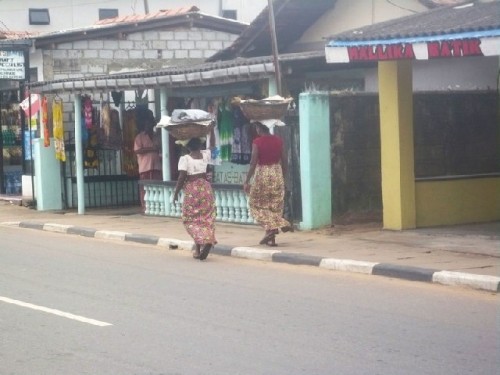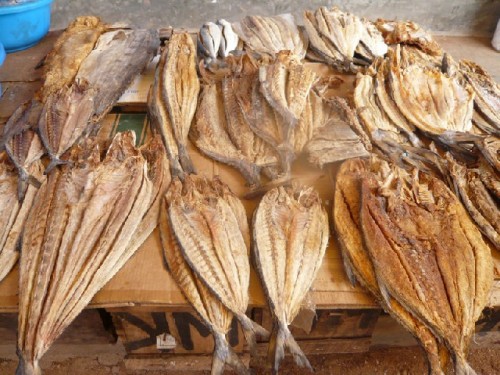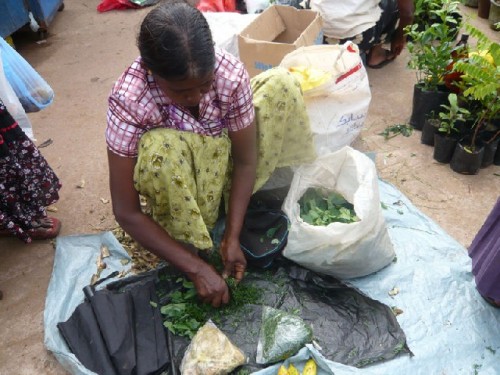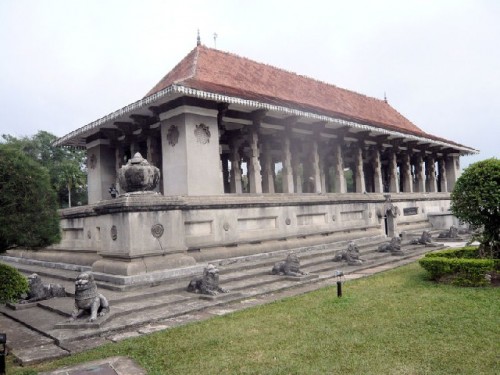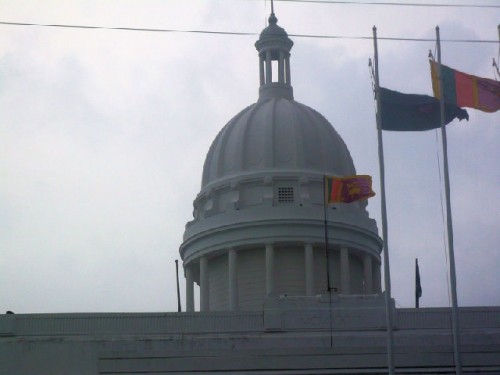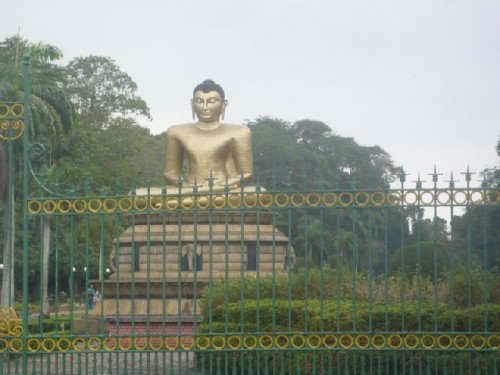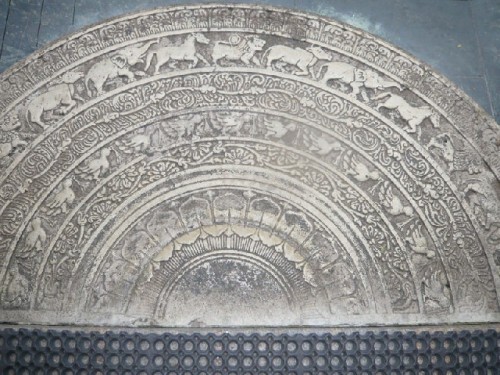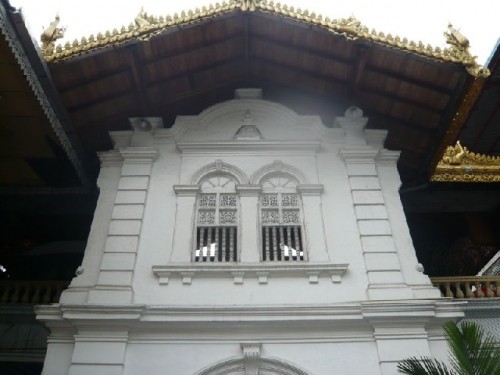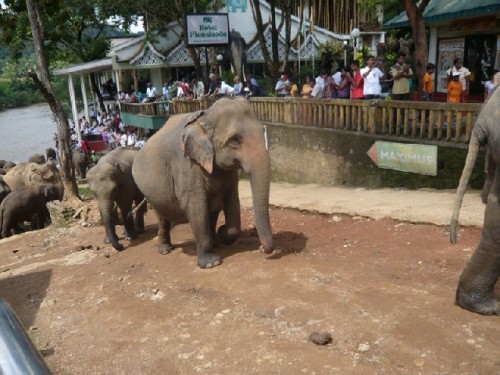Sri Lanka: Part One
Colombo, the Gateway City
By: Zeren Earls - Apr 15, 2011
In 2011 Boston experienced several major snowstorms before my planned seven-week journey to South Asia, starting in Sri Lanka. As I feared, a pending snowstorm on January 12 caused British Airways to cancel my flight to London, where I was to connect to a flight to Delhi, and from there continue to Colombo. In order not to miss my London connection, I had to fly out of Boston a day earlier than planned and with only three hours’ notice!
Arriving in London early allowed me to catch up on my sleep by checking into a day-room at Heathrow airport, as my Delhi flight was now eight hours away instead of two. Feeling refreshed and relieved of my winter jacket, scarf, and gloves, I boarded British Airways again for the eight-hour Delhi leg of my trip. The 60° Fahrenheit in Delhi felt good compared to the 20° back home. Taking off my socks, I felt ready for the even warmer climate ahead in Colombo, now only another three and a half hours away.
India Jet Airways welcomed us with a serving of chicken curry followed by rice pudding, all served with proper silverware. As the flat landscape of Colombo on the Indian Ocean appeared below, I was reminded of the 2004 tsunami which had devastated much of Sri Lanka’s coastline. Once I was on the ground, the laid-back friendliness I saw while waiting for my luggage to be delivered reminded me of visits to the Caribbean islands. Instructed by phone by our local guide, I took a cab to our group’s hotel in Negombo, a fishing town six miles north of Colombo where we spent the first two nights.
Visiting Negombo prepared our group of fifteen for the commercial bustle and pollution of Colombo, the capital city. Amid groves of coconut palms silhouetted by smog, we walked to the seashore, passing women in long skirts carrying baskets of cleaned fish on their head. Fishermen go out to sea at 2 am in order to have their catch cleaned and ready for the morning market. Sri Lanka is the richest fishing area in the world, as there is no land mass around to claim the fish.
Fishing craft such as outrigger canoes and catamarans brought fish large and small, ranging from swordfish, tuna, and barracuda to herring, mullet, and sardines. Little sprats sparkled in nets as they tried to escape; drying fish blanketed the reddish sand; blackbirds hovered above as dogs sniffed about on the ground. The Negombo Fish Market displayed a variety of shellfish — lobster, prawns, and very large crabs — in addition to assorted fresh and dry fish.
Although Sri Lanka is predominantly Buddhist, Catholic churches dot the landscape of Negombo, as Portuguese were the first colonial settlers, occupying the island’s coastal areas in 1505. The Dutch captured the town twice from the Portuguese, before losing it to the British in 1796. Negombo was an important source of cinnamon for the Dutch, who built canals to carry spices on barges. Ornate churches and other buildings are still reminders of colonial days.
Of the twenty-one million population of Sri Lanka, three million live in greater Colombo. We drove through dense traffic of buses, cars, motorcycles, and tuk-tuks to reach the city proper, home to one million people. Low-income houses congregate along the canals; most buildings — new and old — have a veneer of mildew due to all the surrounding water and dampness. The cosmopolitan city revealed itself as we drove by churches, mosques, Hindu temples, Buddhas, and stupas. Catholic nuns in white habits, women in saris, men in Muslim caps, and women in chadors accentuated the streets, which were full of colonial and modern architectural contrasts.
Our city tour began in the Fort district in the center of colonial Colombo. The original fort was built by the Portuguese, expanded by the Dutch, and dismantled by the British, who instead built streets with neoclassical buildings during their rule in the nineteenth century. The district retains its colonial character, with crumbling buildings lining a grid of streets. Much of the area’s charm has vanished, however, due to the civil war, under repeated bombings from the Tamil Tiger guerillas. Large sections of this area are cordoned off for security reasons, as it is also the neighborhood of the President’s house; therefore, no photography is allowed.
The current President, Mahinda Rajapakse, enjoys popularity for defeating the Tamil Tigers and reclaiming all rebel-held territory in 2009. Since the failure of negotiations for total surrender, 80,000 members of the Tamil Tiger network have been put in camps in the northern part of the country, to which even organizations such as Amnesty International have no access. 18% of the population are Hindu Tamil, who feel discriminated against by the Buddhist Sinhalese.
At the heart of Fort district is its landmark, the Lighthouse Clock Tower. This hybrid structure no longer serves as a beacon for ships, as new high-rise buildings block its view from the sea. Also by the harbor is Saint Anthony’s Cathedral, which is visited by people from various faiths eager to tap into the saint’s miraculous powers.
Following a lunch break of seafood pasta at the Liberty Plaza shopping mall, we drove to Cinnamon Gardens, an exclusive suburb of Colombo named for the plantations of cinnamon which grew here during Dutch times. The area has wide streets shaded by canopies of tropical trees and lined with old villas. On Independence Avenue is Independence Commemoration Hall, a national monument built as a memorial to independence from British rule and establishment of the Dominion of Ceylon on February 4th, 1948. The monument was built on the site of the formal ceremony marking the start of self-rule with the opening of the first Parliament. Located at the head of the monument is a statue of the first Prime Minister of Sri Lanka, Don Stephen Senanayake, known as the “Father of the Nation.”
Colombo functions on a one-way street plan to minimize traffic. Negotiating our way through gridlocked streets, we were able to fit a few more sites into the day’s itinerary before returning to Negombo. Viharamahadevi Park is an expansive open green in the city; originally known as Victoria Park, the park was renamed after independence, taking the name of a Sri Lankan, rather than a British, queen. The park features a large Buddha statue, along with ebony, mahogany, lemon, fig, and eucalyptus trees among lotus ponds. Here resident fruit bats hang on trees during the day, waking up at dusk. Overlooking the park is the Town Hall, built in 1927 — a neoclassical building topped with a white dome and Sri Lankan flags. The national flag bears a lion with a sword in the center, and has two vertical colored bands on the left representing minorities — green for Muslims and orange for Tamils. A large golden Buddha sits out front the Town Hall.
The Gangaramaya Temple is a modern Buddhist structure, with a “moonstone” at the entrance. A moonstone is a decorative semicircular slab of polished granite, serving as a spiritual doorstep from the physical world to that of Nirvana. While carved details vary from temple to temple, moonstones share common elements. They have an outermost ring showing flames, which symbolize desire. Within the flames are allegorical representations of four animals — an elephant (birth), a horse (old age), a lion (sickness), and a bull (death). Inside the circle of animals are vines, representing attachment to life; next, proceeding inwards, are geese, which stand for purification. Having crossed these bands, one arrives at the center, where there is a carved lotus representing attainment of Nirvana.
Beyond the moonstone entrance to the temple is the main shrine, filled by an enormous fluorescent orange Buddha and a host of attending deities and disciples. A courtyard leads to various shrines to other gods revered by Sri Lankan Buddhists. The temple also has a museum with a vast collection of objects given by devotees over the years, including sandalwood and ivory carvings, brass gods, crystal and jade statues, and elephant tusks.
The following morning we left for the central part of Sri Lanka, heading north toward Dambulla. Traveling through villages, we passed houses with thatched roofs of coconut palm leaves and others with clay roofs to keep cooler interiors. Buddhist flags along with the President’s photo seemed to be everywhere. Colorful ribbons of political parties were occasionally replaced by white ones, heralding a death in the village. We drove onto a rough country road with puddles, but with picturesque emerald rice and pineapple fields. Laundry dried, stretched on shrubs; stray dogs searched for food; people on foot or on bikes carried heavy loads. Signs in Sinhalese distinguished themselves with their curved round characters, as opposed to the angular ones of Tamil writing.
Turning off at Kurunegala, we drove onto a paved road, alternating with secondary roads, to reach the Pinnawala Elephant Orphanage, which provides sanctuary for elephants orphaned or injured in the wild. Founded in 1978 with six baby elephants, the orphanage now cares for sixty-five, including one that stepped on a landmine during civil war clashes. The orphanage also has its own breeding station, which has so far reared twenty elephants in a natural habitat.
The elephants were bathing in the shallow waters of the Ma Oya River when we arrived. Watching some sixty-five elephants splashing around in the river together was a unique spectacle. We were also able to see them return from the river for feeding. Their daily routine includes three feedings a day, followed by bathing.
Visiting the Elephant Dung Factory was yet another unique experience. Here we watched the process of making paper by hand using elephant dung, yielding a textured product with earth-tone filaments. While I did not buy any paper, I felt lucky to find an eight-inch replica of a granite moonstone in one of the many souvenir shops catering to the large number of tourists. Back on the road, we continued on to Dambulla with views of buffaloes and rice fields, affirming the choice of the locals in naming their island nation, Sri Lanka, meaning “Lucky Land.”

